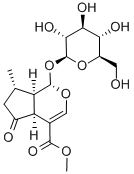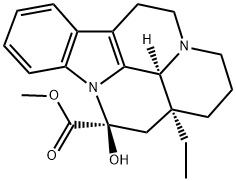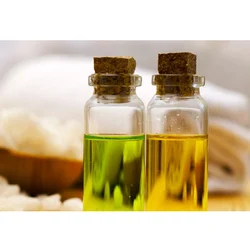Vetivert oil
- CAS NO.:8016-96-4
- Molecular Weight: 0
- MDL number: MFCD00678246
- EINECS: 282-490-8
- Update Date: 2025-12-17 09:49:57
What is Vetivert oil?
Chemical properties
Vetiver oil is produced by steam distillation of the roots of the grass Vetiveria
zizanioides (L.)Nash (Poaceae), which grows wild or is cultivated inmany tropical
and subtropical countries.Theoil is a brown to reddish-brown, viscous liquid with
a characteristic precious-wood and root-like, long-lasting odor.
The tenacity of the highly complex vetiver oil is attributed to its high sesquiterpene
content. The ketones α-vetivone (1–6%) and β-vetivone (2–5%), which usually form up to 10% of the oil, as well as khusimol
(5–18%) and isovalencenol (1–16%), are the main constituents.
The oil contains a considerable number of bi- and tricyclic primary, secondary,
and tertiary sesquiterpene alcohols called vetiverols or vetivenols. These alcohols, as well as their acetates, are valuable fragrance
materials. Since several varieties of vetiver grass exist and since fresh as well
as air-dried roots are distilled under conditions that vary with the producer,
the quality of the commercial oils differs considerably. Oil yields are up to 3%.
150–200 t are produced annually.
Chemical properties
Herbaceous plant having thin rhizomes and rootlets; it grows wild or cultivated in various tropical countries—southern India, Indonesia, Ceylon, the Philippines, East Africa and Central America. The fibers of the grass are woven into fragrant matting with an aromatic, balsamic odor. The largest and industrially most important cultivations of vetiver are found in Réunion Island, Java, Haiti and southern India. The parts used are the rhizomes and rootlets. Vetiver has a sweet, heavy, rich, woody, earthy odor and an asparagus, green-pea flavor.
Chemical properties
Vetiver oil is obtained by steam distillation of washed and sun-dried rootlets and rhizomes from Vetiveria zizanioides in approximately 1.0 to 1.5% yields. The oil has a characteristic, sweet, earthy, woody odor that varies somewhat, depending on the source.
Physical properties
The oil is a viscous, light-brown to dark-brown liquid.
The Uses of Vetivert oil
vetiver oil (Vetiveria zizanioides)(khus-khus) is considered stimulant and tonic, and used in perfumery as well as in cosmetics. The oil, which has an aromatic to harsh woodsy odor, is produced from the roots of a fragrant grass.
Definition
Extractives and their physically modified derivatives. Vetiveria zizanoides, Gramineae.
Essential oil composition
The main constituents include vetiverol (a mixture of sesquiterpene alcohols), vetiverone (sesquiterpene ketone mixture), vetiveryl esters and palmitic and benzoic acids.
Composition
Khusimol, sesquiterpene alcohol isolated from the root of V. zizanioides was found to competitively inhibit the binding of vasopressin to rat liver V1a receptors.*
Properties of Vetivert oil
| Odor | at 100.00 %. woody balsamic |
| EPA Substance Registry System | Vetiver oil (8016-96-4) |
Safety information for Vetivert oil
Computed Descriptors for Vetivert oil
Vetivert oil manufacturer
New Products
4,4-Difluoropiperidine hydrochloride tert-butyl 9-methoxy-3-azaspiro[5.5]undecane-3-carboxylate Indole Methyl Resin N-Isopropylurea N,N-Dicyclohexylcarbodiimide(DCC) MELDRUMS ACID 5-METHYLISOXAZOLE-4-CARBOXYLIC ACID Magnessium Bis glycinate Zinc ascorbate 1-bromo-2-butyne 2-acetamidophenol 9(10H)-anthracenone Erythrosin B, 4-Piperidinopiperidine 2-((4-morpholinophenylamino) (methylthio) methylene) malononitrile 2,4-dihydroxybenzaldehyde 3-(4-morpholinophenylamino)-5-amino-1H-pyrazole-4-carbonitrile Methyl 2-methylquinoline-6-carboxylate 2,6-dichloro-4-nitropyridine 4-Bromo-2-chlorobenzonitrile 2-(benzylamino)acetic acid hydrochloride 4-(tert-Butoxycarbonylamino)but- 2-ynoic acid 3,4-dihydro-2H-benzo[b][1,4]dioxepine 1-Phenyl-1-cycloprppanecarboxylicacidRelated products of tetrahydrofuran








You may like
-
 8016-96-4 98%View Details
8016-96-4 98%View Details
8016-96-4 -
 8016-96-4 Vetiver oil 98%View Details
8016-96-4 Vetiver oil 98%View Details
8016-96-4 -
 Vetiver Oil 99%View Details
Vetiver Oil 99%View Details -
 25Kg Vetiver Oil, 100% PureView Details
25Kg Vetiver Oil, 100% PureView Details
8016-96-4 -
 Vetiver OilView Details
Vetiver OilView Details
8016-96-4 -
 20677-73-0 (2,2-diethoxyethyl)methylamine 98%View Details
20677-73-0 (2,2-diethoxyethyl)methylamine 98%View Details
20677-73-0 -
 3-(4-(hydroxyamino)-1-oxoisoindolin-2-yl)piperidine-2,6-dione 98%View Details
3-(4-(hydroxyamino)-1-oxoisoindolin-2-yl)piperidine-2,6-dione 98%View Details -
 57381-49-4 2-bromo-4-chlorobenzonitrile 98%View Details
57381-49-4 2-bromo-4-chlorobenzonitrile 98%View Details
57381-49-4
